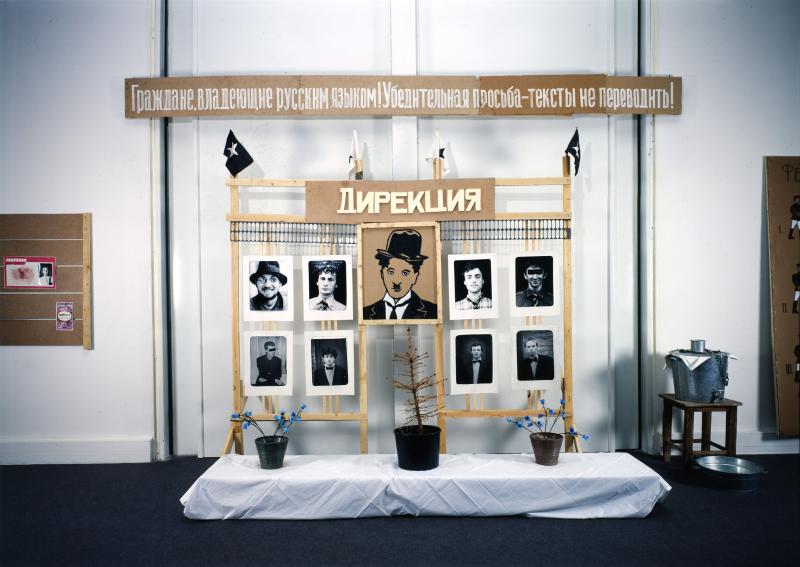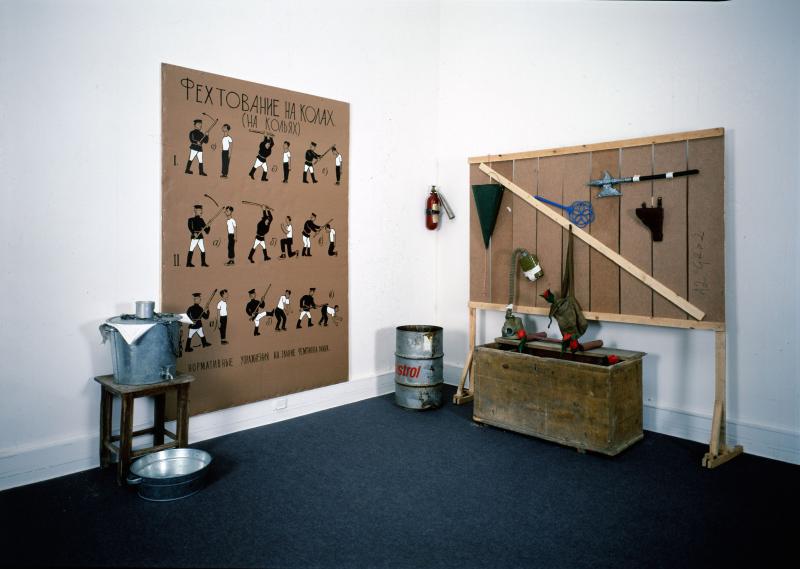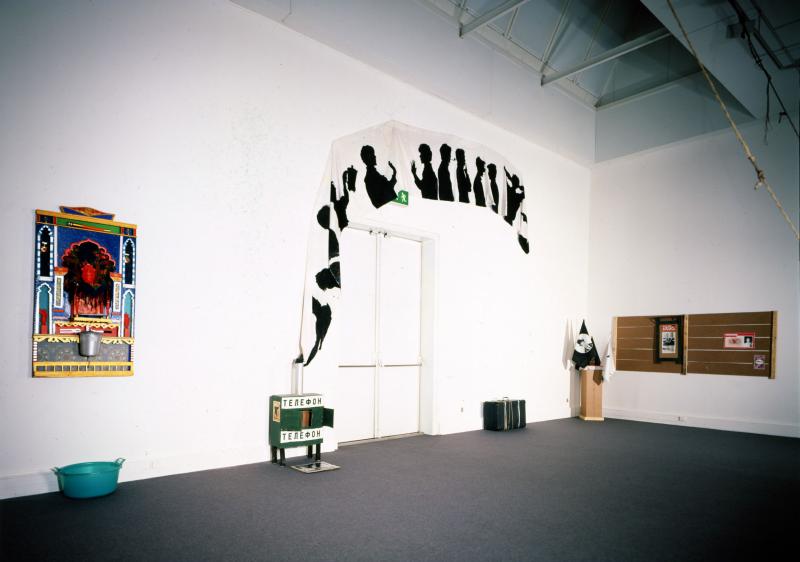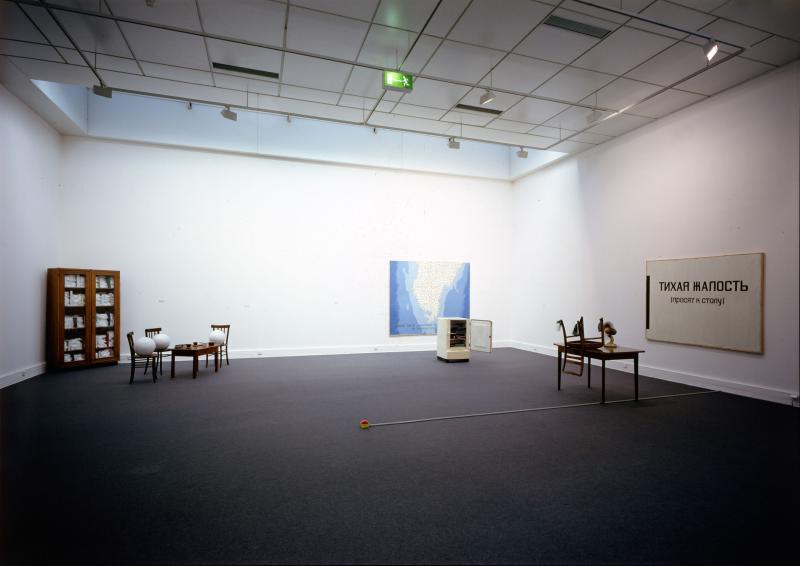Contemporary Russian Artists
February 10—May 14, 1990
Curated by Amnon Barzel e Claudia Jolles
This exhibition of Contemporary Russian Artists is opening in one of the most dramatic and crucial moments in European history since the end of the World War II. Art done in Russia now represents a station, an identity, and is proof of the fact that there is no differentiation between art and society. Now within the stormy changes in Eastern Europa caused by Perestroika we can add that the 90’s will represent the breakdown of the anomaly of dividing Europe into two cultures, a brutal anomaly which had cut the flow of cultural information and exchange of ideas between East and West. The history of Soviet art in the last four decades is, as a matter of fact, that of the struggle of the unofficial artists to exist and create. This history is emblematized by an oppression of these artists by the authorities and the official art establishment. Non-agreement is the ground upon which all relevant art stands, flourishes, and develops, in the West as in the East, in the present as in any past.
The present exhibition is a selection of unofficial Russian artists, who have been active since the 1960’s; it includes two generations: the older “classic” unofficials, Ilya Kabakov and Erik Bulatov, and a generation of young artists of the 80’s. Even if they don’t like to be identified as political artists, their work is about their existence as individuals testifying against an oppressive situation. Kabakov, Bulatov and their colleagues have worked in an environment of danger, of total refusal, of isolation. The art of these older generations is full of the hints and whispers of those who express their idealism, ethics, and criticism in obscurity. The younger generation is more straightforward, all of them speak a language which is not foreign to the West and their interest in the art language of the West is indisputable. It represents freedom for them. Their means include irony, bitter criticism, humor as the weapon of the weak, social concerns and sarcastic comparisons between myth and propaganda and the real suffering of everyday life. As Ilya Kabakov put it: “For 40 years we heard about this river of art in the West. Most of us thought it didn’t exist. But I smell its aroma in the air. Now I am in it. I am very happy to swim in it”. This exhibition is the proof of that.
Centro per l'arte contemporanea Luigi Pecci
Viale della Repubblica, 277, 59100 Prato PO, Italia
Produced by
Centro per l'Arte contemporanea Luigi Pecci


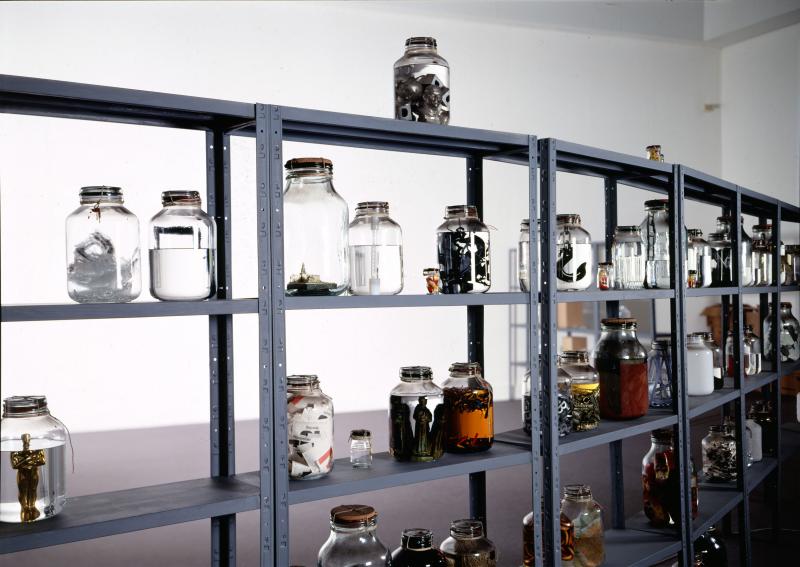
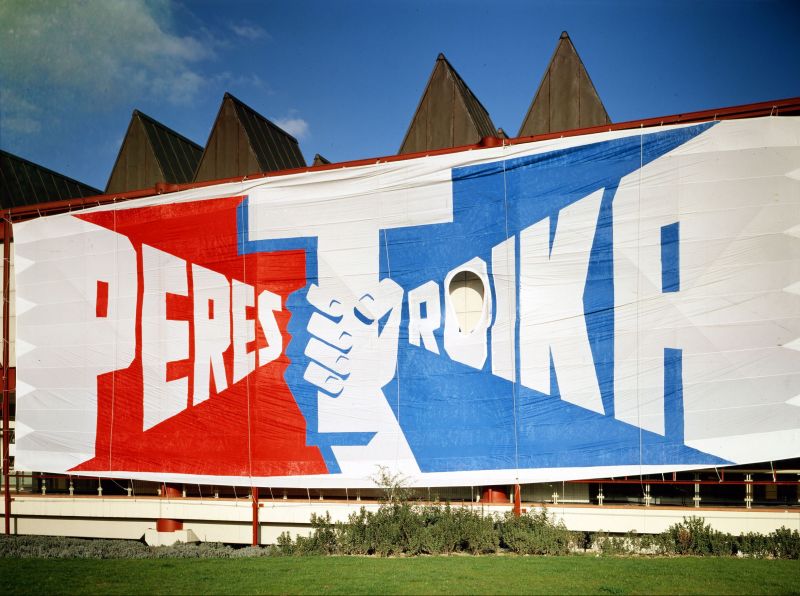

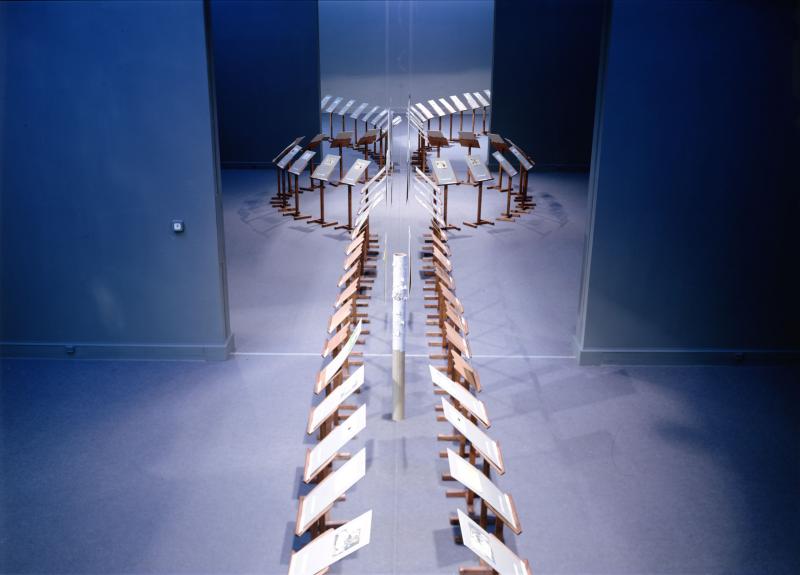
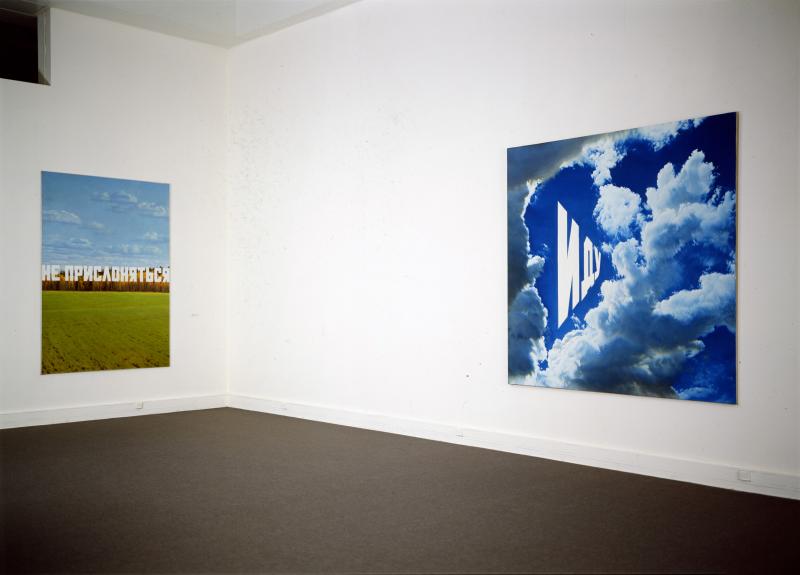
.jpg)
